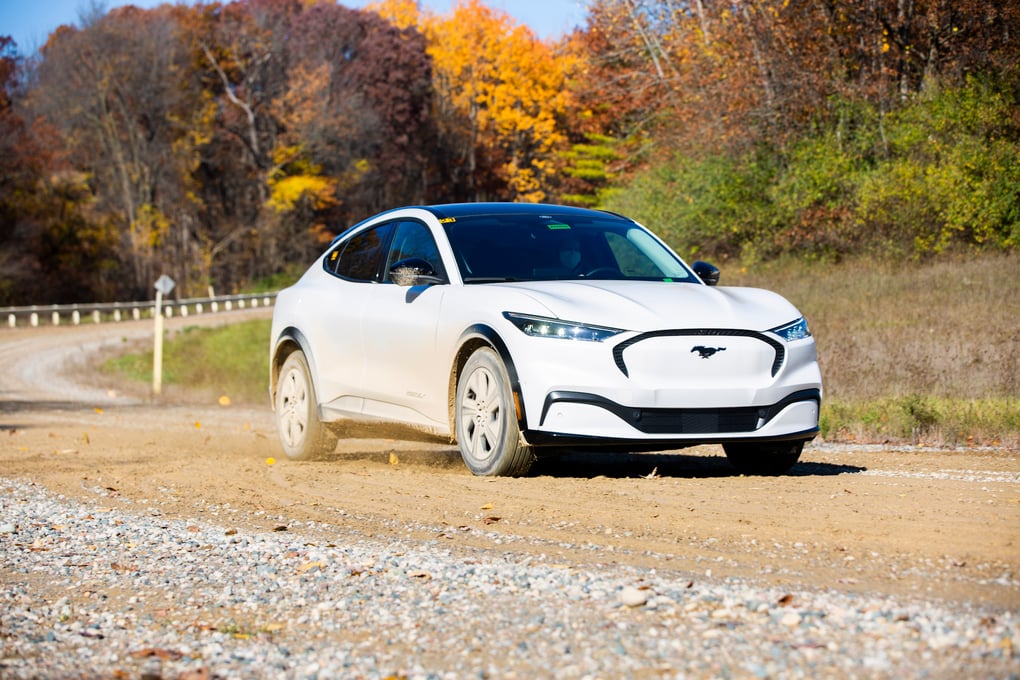When an automaker tests a new vehicle, they employ many methods to do so. But here's one we can't recall hearing before. Ford used "robotic butts" to test the seats in the new Mustang Mach-E. They were one method of testing used to ensure the new Mach-E could stand up to the wear and tear of daily driving. Other methods included extreme car washes and power sprayers along with driving tests on sharp gravel roads. The end goal being to make sure the Mach-E stood up the Built Ford Tough name.
“We have gone to great lengths to subject Mustang Mach-E to extreme tests – stressing it much more than a typical consumer would – to help ensure it is ready to face the rigor of the open road,” said Donna Dickson, chief program engineer, Mustang Mach-E.
Butt-tested
Ford says it tested for just about anything customers might subject their seats to – especially their derrieres. Engineers studied varying weight loads on the seats using a wide range of human body types by programing a robotic “butt” form to simulate a person getting in and out of their Mustang Mach-E – at least 25,000 times.
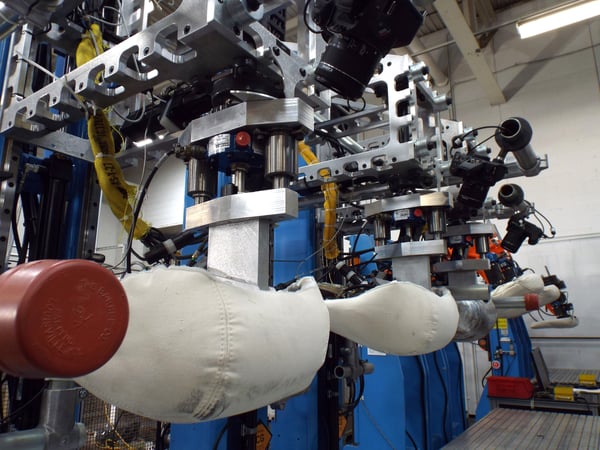 Ford Mustang Mach-E Robotic Butt. Credit: Ford
Ford Mustang Mach-E Robotic Butt. Credit: Ford
Ford says it also extensively tested the vehicle’s ActiveX seating material to withstand daily use and abuse. This included chemical testing to help ensure products like hand sanitizer do not deteriorate the material, abrasion testing to ensure the finish stays put after simulating a 10-year use cycle, and flexing the seating material 100,000 times to assess its resistance to cracking.
Ford says the robot butt testing assures customers' that their ActiveX seating material in the Mustang Mach-E can withstand daily use.
Yes, an electric car can get wet
Ford says 27 percent of Americans don't know if electric vehicles can get wet while being driven in the rain – much less be able to go through a full car wash. To prove that it's no problem, Ford put the Mach-E to the test it in its onsite automatic car wash at the Ford Michigan Proving Grounds. Ford says it demonstrates that only can get thoroughly wet, but the exterior stands up to the abuse of consumer washes. Ford says it subjected the vehicle to 60 passes through a brutal, suds-free automatic conveyor wash complete with sprayers, brushes, and dryers – basically think of as the equivalent of a washing your car every two weeks for more than two years.
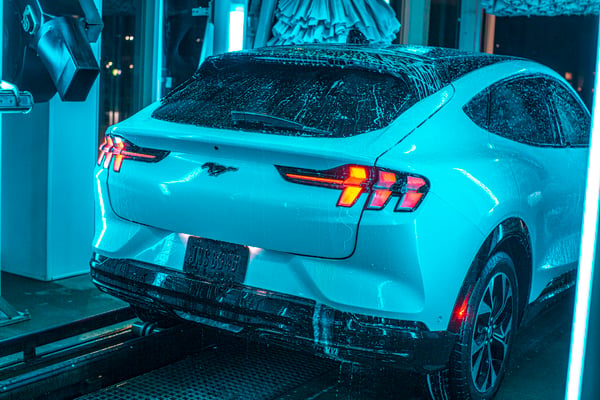 Ford Mustang Mach-E Car Wash Testing. Credit: Ford
Ford Mustang Mach-E Car Wash Testing. Credit: Ford
Testing for leaks and other exterior damage that could be caused by water was part of the process. To do that, the Ford team blasted the door frames, trim, cowling, badges, headlamps, taillamps and adhesives of the Mustang Mach-E with a high-pressure water sprayer, capable of pressures up to 1,700 PSI and a temperature of 140 degrees and sprayed at a short distance of about one foot away.
Durable Touch Screen
Back to the interior, Ford also tested the durability of the Mach-E's 15.5-inch touch screen. It uses a special application of Dragontrail glass to ensure its durability. It also sits on top of a high-strength magnesium mounting that can withstand being pulled or bumped.
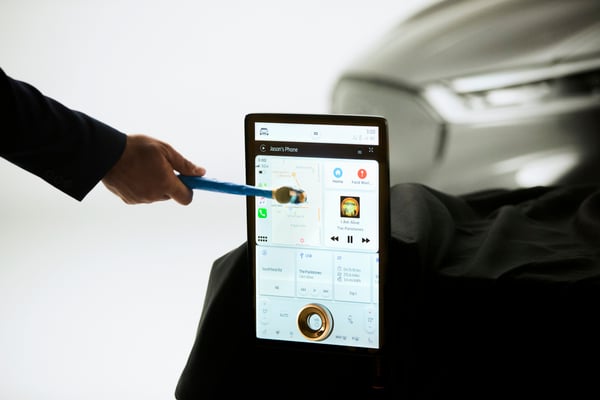 Mustang Mach-E Car Touch Screen Durability Testing. Credit: Ford
Mustang Mach-E Car Touch Screen Durability Testing. Credit: Ford
“The screen in the Mustang Mach-E is so crucial to the driving experience. It’s the centerpiece of the interior and people’s eyes just naturally go right to it,” said Dickson. “We knew we had to go above and beyond to make sure it is durable enough to withstand daily customer interactions — think purses and bags hitting it, pets bumping into it, children playing with it and so on. You need that deep customer understanding to identify the potential issues and work to prevent them.”
No stone left unturned
Now to the open road, or more aptly the open gravel road. Ford wanted to make sure the Mach-E's paint couldn't be easily chipped by road wear and tear. So its engineers subjected Mustang Mach-E to 300 miles of stone-chip testing on gravel roads to evaluate damage caused to body paint by small rocks and cinder.
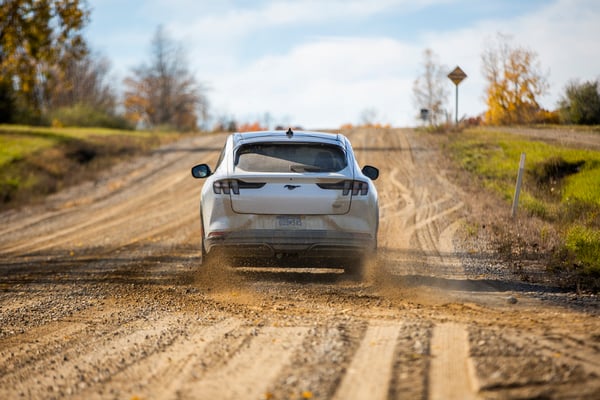 Ford Mustang Mach-E Gravel Testing. Credit: Ford
Ford Mustang Mach-E Gravel Testing. Credit: Ford
Ford used two different grades of gravel stones to test as professional drivers fishtailed Mustang Mach-E over a miles-long stretch of scattered gravel on pavement at 60 mph nearly 200 times.
Once the first test was completed, the team then switched out the gravel with an even sharper grade of stone and repeated the test all over again.
“Electric vehicles shouldn’t be limited to nicely paved city streets and suburbia,” said Dickson “We tested Mustang Mach-E so that customers can confidently live on or adventure down gravel roads and not worry about their paint easily chipping.”
If you missed CarProUSA Show host Jerry Reynolds' recent review of the Mustang Mach-E click here or watch the video below.
